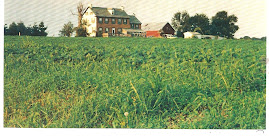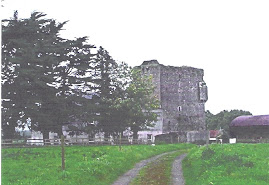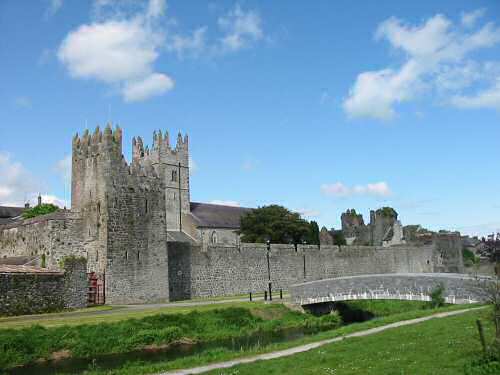Joe Wearing who is the Canadian "Cousin Abroad" that I was referring to posted this today at our Fant/Faunt/Font ancestry.com DNA site.Please everyone check that out also:
http://www.ancestry.com/ and then looking for the DNA home hopefully will get you there.
Joe descends from the Westmeath Faunt family.His ancestor emigrates to Canada and those who are left behind eventually find them selves in County Cork.
Sometimes they are even near Mitchelstown Cork which is RIGHT on the borderland between Limerick and Cork quite close to the ancestral home at Kilmallock and where my Faunts are found in earlier and later times.
" Kathleen had said in an email that she was under the impression that Catholics could not own land in Ireland. Land tenure in Ireland before the 20th century was quite complicated and very different from what we are familiar with in Canada and the US. There is a very helpful article on "land tenure" in The Oxford Companion to Irish History. The article (very much abbreviated) says that in early medieval Ireland, land tenure was determined by kinship. The Anglo-Norman invasion of the 12th C brought a new system based on lordship. Early modern land tenure, as in England, was based on the assumption that all land was owned absolutely by the king and that others held from him either directly or indirectly. Under English common law there were two types of tenure, freehold or leasehold. Freehold was in turn of two types, a fee simple which subsisted for ever, and a fee tail which was restricted to the immediate descendants of the original grantee. Leasehold was for a fixed period, usually years or named lives, over which a rent was paid. A third category of tenancy was "tenancy at will" which could be terminated by either party at any time. The three types of tenancy were a reflection of the social hierarchy. During the 18th century, for instance, the usual tenure for middlemen and the larger tenant farmers was leasehold. (Middlemen held large properties directly from landlords on long leases and sublet them to their own undertenants for shorter periods at higher rents - "rack rents".) Up to 1850 the parliamentary franchise was restricted to tenants holding leases for lives. (Before the Catholic Relief Act of 1793, only Protestant tenants had the vote.) The pattern of tenure change rapidly during the early 19th C. Leaseholds became shorter and the Great Famine bankrupted most middlemen, who were responsible for paying the poor rate on behalf of their own impoverished smallholders. By 1870, 80% of Ireland's 500,000 tenants held tenancies which were just a year in length. With the passage of the various Land Acts (1870-1923) the system of tenurial landholding was abolished and replaced by owner occupation.
There is a lot of interesting documentation on my immediate Faunt relations in the records of the Irish land Commission in 1903 all of which is on Mormon film no. 0592932. The Faunts of Youghal in co. Cork appear to have been "middlemen" - quite a messy story, which I want to write up some time "
This from Joe.
I, in the meantime, pulled these records and found that maybe two of the Fant/Faunt families in Tipperary may also have been "Middlemen".
Patrick Fant in Templemore North Riding at 167 Main Street leased to William Looby and at 168 lived in the property himself. This Pat Fant is an MD but unfortunately I do not think he is my ancestor. He IS however related to others in the line and definitely close kin to Rev. Patrick Fant who was an Archbishop in Templemore. That Rev. Fant was associated with a Fant family chalice, from the castle at Fantstown which is found in his church near Drumm.
My Irish researcher believes that this family which is found near Bansha/Galbally is one and the same with my family circa 1730.Galbally is very near to Mitchelstown.
William Fant does something similar with regard to sub-letting on the Cashel Road in Tipperary, near Fethard but possibly for another reason.He and his cousin( or uncle) also William were Nailers, a hereditary occupation that restricted where they worked and sometimes lived.This is due to Fethard being a walled Market town from Norman time which has laws and customs about who works and lives where.
These two William Fants, one of whom is my direct ancestor sometimes lived in Cashel and sometimes in Fethard but always on the road to Cashel.
1872 :: Birth of First Set of Henry Twins
1 year ago












No comments:
Post a Comment